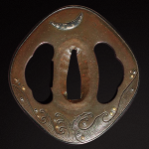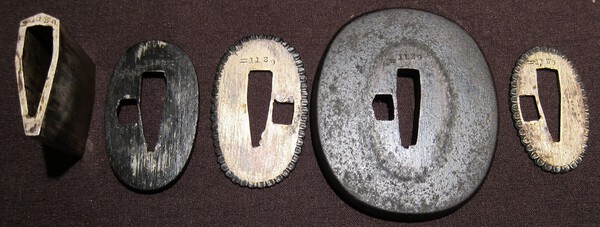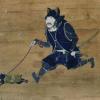Leaderboard
Popular Content
Showing content with the highest reputation on 08/16/2020 in all areas
-
Hello, I would like to present my newest Tanto Koshirae. Saya. Working with the shells turned out to be very laborious. I used eggs from the village with a fairly thick shell. It is important to peel off the inner film after boiling, which is best to come off wet. The application lasted about 4 days. Then, filling small gaps and lacquering. During sanding, be careful not to take too much ... Tsuka. Samegawa dyed in the process of 2 natural dyes, which I received from a Japanese professional Tsukamakishi. Tsukamaki. The first time I did a 10-pair braid. The difficulty with more pairs is keeping straight lines on the center of the hishi in the cross section. Therefore, I decided to make the middle part of hishi - using the hineri-maki method. This in turn causes the cross section to be raised and the need for more hishigami / komekami ... The braid is a bit taller / protruding, but it gives a good depth. The braid is fully stitched so the threads do not slip and are tightly stretched. Used jabara is 0,85 mm diameter. My dream is to make a 12-pair braid. However, I can't find the right thickness for the jabaraito anywhere, it has to be about 0.65mm thinner. I used honoki wood. Saya fittings. Koiguchi of copper, rest of buffalo horn. Seppa with filing big teeth of copper. Keep fingers crossed for next better project.12 points
-
Well said Brian, and an important point to make. Even though I can afford some nicer pieces now, for a couple decades I had exactly zero budget for swords. So the meager collection that I built was all on sweat equity. I ran ads in papers, dropped everything and went to see swords when I got calls, bought all the books I could afford (especially reference books to tell if signatures are authentic) and learned as much as I could. As my friend Dale says, the harder you work, the luckier you get. If you work hard enough in this hobby, you can develop at least essential knowledge and find some very nice pieces that are not very expensive. Of course, back in the day when I had no discretionary funds, I would have to sell those good swords that I found cheap and use the proceeds to be able to continue to buy other good ones when I found them. There are still many bargains to be had on ebay, at sword shows, at local auctions etc. Learning to find the diamonds in the rough is the most fun for me. Fred Geyer picked up a tanto for a couple thousand bucks on ebay a couple years ago and it went juyo. There are many other examples of exciting finds and there will be many more. It is not essential to be a hard core student of swords or to hustle to build a collection in order to enjoy Japanese swords. We just congratulated a new collector and member of the NMB who bought a Jumyo blade for three hundred bucks and it was a pleasure to share his honest joy about finding it. In the period of corona virus, we have taken up bickering and swaggering a bit too much and I humbly hope that we can put that to rest.5 points
-
For the record: I have entertained this whole discussion because we are a discussion forum. And what is posted is in the interests of collecting. I don’t delete what I don’t agree with, and keep what I do. That said, it would be great if we could all collect top swords only. Ubu swords in great condition, signed and polished. But that’s not reality in this hobby. The majority of us will strive for that, but end up with suriage Shinto or average swords in average condition. And as long as we don’t let our ambitions stay there, and at least study better swords, that is fine. As long as you enjoy your collection, That is just fine. As long as we do no harm to swords we come across, that is just fine. As long as we respect the culture and history of what we are collecting, that is just fine. This is not an either/or situation. Strive for the swords Ray advocates, but collect what you are able to and never feel embarrassed of what you own. This forum will never become elitist or exclusionary. The fact that many members here started out with nothing and ended up with fine papered swords means we are doing something right. Unless I win the lottery, a juyo isn’t in my future. But I enjoy what I own and see some beauty in all of them. Discussion and advice on how to collect is welcome. But let me stress that denigrating anyone or insulting them because of their collecting choices is a fast way out of here.5 points
-
3 points
-
Trust me, far from it. A lot of this is posting and begging on other community forums That's why things are taking some time. One thing at a time...we'll get there.3 points
-
Hello, This set will never cease to amaze me. It looks like a suaka ... Exactly. But when I took it, it turned out to weigh 4 times less. Later, thanks to Japanese Tsukamakishi help, I determined that it was probably urushi + tonoko, formed on a thin copper plate. If you have encountered such sets, please contact me. From a practical point of view - not practical at all, but if the sword was to be light, then maybe it changes the sense of using this material. Have you encountered this type of tosogu?3 points
-
Katana signed Oshu _ Masanaga (Shinto). Boxes indicate kanji which are difficult to read.2 points
-
I think mei is 一刀斎安綱作 - and smith Ittōsai Yasutsuna. He was born 1924 and died 1990. Here is one reference sword: http://kako.nipponto.co.jp/swords2/KT215546.htm2 points
-
It’s not. I can confirm you that we are indeed weirdos. Must be true since everyone who doesn’t collect them thinks so.2 points
-
Arthur, contact Paul Martin. He is a member of board of modern artists ( can't remember the initials). I'm sure he will be able to help you.2 points
-
SOLD, once buyer acknowledges its received, donation to upkeep, as usual2 points
-
2 points
-
These are called Hakata Ningyo (博多人形). They were extensively made in many many different themes of people performing daily tasks, folk arts, trades, arts, etc and popular souvenirs in post war Japan.. I have a couple of them also.2 points
-
hello, i have had the fortune of befriending a very nice individual who is the smith at usagiya. for the last five years, every summer i would travel to Japan with my students and we would visit mr. hiroshi kojima at his home/forge. he has been very kind to us and spend a lot of time showing us his work, the forge and let everyone try their hands at forging and quenching. that is also part of his experiment called the gotoba project. the experience was quite fun, incredible, enlightening and educational. http://www.ksky.ne.jp/~sumie99/US1.html http://www.ksky.ne.jp/~sumie99/CF.html http://www.ksky.ne.jp/~sumie99/ns2.html his smith name is keiun naohiro. his title is naohiro the 5th. on one of these trips i saw a new blade that is unpolished and immediately liked the shape. turns out its a fun project that he was working on. he lived in the town of honjo and so decided to try to make the honjo masamune. http://www.ksky.ne.jp/~sumie99/Masamune.html and so i purchased it from him. the smith had in recent years started to participate in the nbthk sword competitions and this sword is his second one that received nyusen award. that was in 2019. this is not a commission but its as close as i got to it. its a very fine tachi and beautifully polished in older style without the burnished shinogi. mr kojima speaks english quite well and was able to coach everyone through the process of making the blades. and while he has been more inclined to make bizen style blades, he also takes commissions with what the clients wants and other fun experiments that tends to irk the higher ups in nbthk, which he does take some joy in.2 points
-
The way I see it, anyone preserving nihonto in good condition is doing a good thing. And even if it’s mumei, suriage, and from the Shinto period, it’s still worth preserving if it’s in polish. There’s never a reason to judge anyone who is collecting in good faith within their means. If you meet a millionaire who owns 50 mumei chu-saku Kanbun wakizashi, then I think a conversation might be in order. But we really have no place to criticize the average Joe/Jane who (hopefully) builds a small library of books, sees swords in person when possible, and owns a low grade blade or two. It’s all relative. There are blades out there that are truly junk, and I think we all know that’s not what we’re discussing. Everyone has their own collecting journey, and we all learn as we go. I would never judge or fault someone who genuinely loved nihonto and owned a mumei Shinto piece if it was the right investment for them. Owning art of any kind is personal. And preserving artifacts should be commended regardless of their value.2 points
-
Recently discovered by NIck Komiya at Warrelics: I don't know how relevant it is to the discussions here, but the navy also issued a "Last Ditch" Rinji spec directive for officer swords on 27th March 1945. Directive Number 54 said "1: Gilding, Gold Colored Metal and Cherry branch engravings are to cease, 2:Sarute not to be attached, 3:Only one Haikan (scabbard ring) to be present, 4: Use of animal skins to be minimized, 5: Push button type locks to be changed to tie-cord type, 6: Scabbards to be wrapped in tree bark and be finished with black lacquer. By that time, the navy had lost its ships and most members got deployed as land troops, so it is understandable if the above Rinji spec got to be associated with the NFL. The PX sword discussed here seems to consist mainly of parts matching the description above, but with some gold colored parts thrown in to beautify them. I asked for clarification on the fuchi design, and he said: "In Japanese, point 1 is 「金鍍金、金色金属、枝桜毛彫及彫刻ヲ用ヒザルコト」, which says no gold color nor engraved or relief adornment, so a "plain Jane". This directive is mentioned in the Ohmura site as well as Wikipedia, so it should be common knowledge to Gunto collectors already." So this explains the odd-ball navy gunto with one haikan (ashi). I'm not talking about the souvenir sold with mixed army/navy fittings, but actual navy gunto. If memory serves, I saw one in combat saya with single haikan. If anyone has an example, I'd love to get it posted here.1 point
-
I have a Star Stamp Gendaito in Type 3 (late '44) mounts, Nakago no. 315 forged Showa Juhachi-nen Ni-gatsu hi (February 1943) I found another Gendaito from the same smith sold on Ebay in Type98 mounts, Nakago no. 320 forged Showa Juhachi-nen San-gatsu hi (March 1943) I thought the type 3 came after the type 98. Very interesting for me.1 point
-
I'm told this blade is koto. I'm not good at the complexity of suguata for the period. Can anyone confirm if this is possibly accurate? Blade is now 25" Hamon appears to be ko midare based on suguba. No obvious flaws Machi okuri by at least 4" In good polish. Solid silver habaki Comes in high end WWII Koshirae with family mon. Pierced tsuba. Not a heavy sword Thank you.1 point
-
this link has many links. i asked a simular question many years ago. here is a old tsuba of mine1 point
-
I think we still have a considerable number of people who have not transitioned to this forum. Some of them may have login problems, and I would like to get everyone here and sorted, and see if we can grown this place and add value to your browsing experience. I don't have time, resources or ability to try and contact everyone and see if they are able to login ok. So I am reaching out to you guys. If you have friends or acquaintances that are members and have not been seen the past week, can I ask you to contact them and ask if they are ok and can log in ok? Anyone not able to log in using their display name or email address, and old password, can use the Contact Us button at the bottom of the forum and I'll get them sorted manually. Please assist me here. Chat to the guys you know or send an email. Let's not leave anyone behind. - B -1 point
-
WOW you do excellent work. Thank you so much for sharing. Your work and the Tanto are beautiful MikeR1 point
-
1 point
-
This has really depressed me and I have considered stop collecting Japanese swords. He passed away just before my birthday and I learned about it on my birthday. My last interaction with Kunio-sensei was in January of this year when I participated in kantei session at the regular club meeting. I scored my first Atari (当) and I was very happy and proud of my work. I knew the answer because I once had a tanto that a previous owner had attributed to Atawaguchi-Yoshimitsu. Here is also a photo of the middle Muromachi Period, Yakuōji Yoshimitsu Tanto (薬王寺吉光短刀) that lead me to do the research necessary to get the atari score at kantei. Little did I know this would be my last interaction with him. I feel very sad. I am sure people here will likely make fun of my post and its typos, but life is a very precious thing and I could careless of the peanut gallery opinion of me.1 point
-
So many Hiroyoshi with different Kakihan as in the previous exemples !😅. What is real, what is gimei? The Hiroyoshi ,I purchased on this site to an honorable member some years ago has a different Kakihan .... Mine looks legimate considering my documentation and other exemples in museums (https://art.thewalters.org/detail/32601/tsuba-with-legendary-figures-by-the-seashore/) .Probably different students adopting the same name ?1 point
-
I also had David do tsukamaki on one of my swords. Good,clean job. Rich1 point
-
Hawley has an entry on ichitosai yasutsuna from mino dated 1935.1 point
-
David McDonald who is a member here actually won a prize for his work on tsukamaki at the competition in Japan.1 point
-
I don't make any claim to expertise JP maybe in another 30 or so years or the next life! The pointers for me is the masame in the shinogi-ji and the look of the hamon. The shape and the nakago can always be made to look earlier but the construction is telling us something I think1 point
-
1 point
-
Hi Pietro I found the mei listing so useful - thanks For ease of my use I've put all the names into an excel spreadsheet so it is searchable It was a big list having almost 3,500 names and just over 850 different kanji I would have liked to put the search section in count order of kanji but was just too much for me If anyone wants a copy then use the link below https://www.dropbox.com/s/xexqx5bgiczv5l8/Netsuke mei.xlsx?dl=0 If you find it useful then it would be nice to make a small donation to the NMB (your choice) Grev1 point
-
OK...the Dark theme is now improved with the fix of the pm bug. You can now read pm's without light text on white background.1 point
-
Ford Hallam would also be able to assist.1 point
-
The ubu, mumei, zaimei ... standards are not the invention of "elite" collectors, but standards that are defined to achieve a certain level of Shinsa (with defined exceptions). It is only natural that we can each "jump" to the volume of our wallet. Several experienced collectors have recommended the same to me - if it is possible for you, travel and look at as many of the best blades as possible. What makes a blade a great blade? Let's put the average blade and the really great one on the table. I'm convinced that the vast majority of us instinctively reach for the really great one. However, the economic reality of many of us forces us to buy the first one. Whether we like it or not, we often collect blades that are of no value to the Japanese. If it makes us happy - everything is absolutely good But to label someone as "elite" just because he is able to make his own collection of items that are excellent is hypocritical. If we all had "unlimited" economic opportunities, we would do the same. At one meeting, I met a collector who is a member of our forum. He bought his first blade after about 10 years of education (if I remember correctly). The blade of the highest level. For me personally, it's admirable - discipline and patience I am aware of my shortcomings and impatience is one of them 😅 That's why I have a collection of several blades, which I'm more happy than if I owned one TJ. (and could be) I'm still at the beginning and looking for "my" way, but for many of us who are at the beginning of creating our collection, the advice "less is more" is doubly true in this hobby.1 point
-
And yet another splendor. Artur, you’re getting better with each work. I may have a Tanto for you to work on in the future. I’ll leave you total freedom and let you do your magic if and when you accept it. Your work never ceases to amaze me. You are a true artist!1 point
-
Hannes, thank You. I used and ate 7 eggs then...1 point
-
This project is really wonderful. Great work all arround. How many eggs have you used for the Saya? I'm already excited about your next projects1 point
-
Artur, The quality of your work is staggering. You really have both the passion and the skill Have you entered, or plan to enter, the NBSK annual competitions? How long is your waiting list? I'd love to send you an item that badly needs a high class wrap. Well done sir.1 point
-
1 point
-
Aye, probably for best Just for the record, Ray not so long ago referred to another member as a c---, but nothing got said1 point
-
Justin you can sew it with needle and thread. You see often in the AOI Arts offers old tsuka it which is fixed in that way. Took a brown of black thread and fix it with some stitches.1 point
-
1 point
-
I suppose it wants to read Kogetsu 光月. Alas, it looks like a 20-century tourist piece to me, so the reading of the signature is not particularly relevant. It is certainly not the early carver who is listed in Davey's book as using that combination of characters... P.S. this list of carvers is always very useful when I try to decipher a signature.1 point
-
Fuller mentions the late war use of celluloid for same'. He even said the crossguard and pommel could be made of celluloid gilded, even a celluloid scabbard! (pages 147-148 of his 1996 edition). The only metal (is yours metal, or could it be gilded celluloid?) saya he shows is a custom dirk of unknown purpose, likely a gift or presentation. But, it isn't official navy style - no sakura or leaves. By the looks of yours, I wouldn't be surprised to find out the saya is celluloid too! In any case, it's the only one I've ever seen like it!1 point
-
1 point
-
I'm back! Thanks to Bruce and Brian...finally got me trained in the new way of doing things...I wish! Anyway, about this Tsukamoto Masakazu blade made 4/17 (April 1942) in Rinji mounts. Pretty early for Rinji as Bruce says, but starting to appear in late 1941? Masakazu 1901-1969 of Fukushima studied under his younger brother Tsukamoto Ikkansai Okimasa in Tokyo and returned to Fukushima in late 1941 to set up his own forge. He became RJT smith from late 1942, but this one is one of his pre-RJT private order blades (no star) and is very long at 69.5 cm. As Bruce has been trying to unravel, this blade is marked 1129 on the tang and 'ni' 1129 on all metal parts, even the button catch and the back of the habaki...we are not certain yet, but as this is not a RJT blade this cannot be an RJT number...mounting shop number? Here are a couple more pics. Regards,1 point
-
Fallacy: call to authority. You assume that this museum is composed of authorities who know better and is just not the hobby of a rich man. Or, you assume that the people advising are not in the 70s to 80s themselves and thereby completely unable to adapt and change. So, if you look at this as a case to cite that uchiko is ok, then you are basing it on bad reasoning. The only thing that matters is results. You are supposed to PRESERVE your sword first and foremost. Constanty grinding it with an abrasive is ALTERING the sword. Every. Single. One. Of. These. BUT "I" USE UCHIKO "CORRECTLY" whenever i get my hands on the sword and the damage they have done it needs shiage to fix. That is cost and time and money coming out of someone's pocket and it limits the life of the sword. It is patently RIDICULOUS to rub a sword with an abrasive item in order to "care" for it. Do you "care" for your mirrors by rubbing them with sandpaper? Do you "care" for your windows with sandblasters? Then don't "care" for your swords with uchiko. Honestly this far in, it's just stubbornness. People who are 80, I forgive, they won't learn something new. Tanobe sensei doesn't use uchiko on the swords I bring him to show so I don't see any reason why you should be saying his care system is inferior to yours because you use uchiko. And I can show you so many swords, each one of them destroyed. The same way you ask everyone are you above average intelligence they will say yes. That is what you get from the uchiko crowd. Frankly, the old guys out there 50 and up, you can't even see with your eyes anymore the damage that you're doing, but a young man can and so can the camera. The camera does not lie, it reveals all of the abuse from uchiko and it renders items unsaleable after your life long "care" and so they need to be polished again. As long as you insist that abrasive materials are "care" items and not repair tools, this will happen, a fast cycle of polishes until swords of today no longer exist. And when they no longer exist we will point back and say these guys thought sandpaper was a good material to maintain a steel surface. How sad. ALL YOU NEED IS OIL AND REMOVE OIL You, as a custodian, do NOT need ANYTHING more than that. OIL REMOVE OIL Sandpaper is not required in this process. I ... my mind is just completely boggled, that people are still in this day and age confused on the matter or saying I am the one who does it right. However I look around me and see Japanese people claiming they are immune to covid due to their enhanced genetics and I see people refusing to wear masks because it's a hoax so I am not surprised that people lack the facilities to determine that abrasives are not care items. CARE MAINTAIN DO NOT ALTER OIl, and rub oil off. That's all you need to do for your life. Yeah, here is the curve: It's a rust removing tool and if you don't have rust, don't use it. Otherwise oil it and remove the oil. There is no way to avoid this. You with your old eyes you can't even see. I can't even see with my old eyes. You won't get it off, you get it in the oil, you form slurry. The evidence is literally on EVERY SWORD that was "cared" for with uchiko. Swords far more valuable and important than what you have. Don't use it. There is no reason for it. Microfiber removes the oil better than a slurry of polishing stones rubbed over steel and does no damage. People shouldn't even be fighting for this backwards stuff at this point in time. I am dealing with top level dealers and they're all using microfiber. Tanobe sensei is using microfiber. It's just ... like people who want to drink hot sake because they think it's authentic. People do not do this stuff anymore. It's an anachronism. It's gone. You're using typewriters in the iPhone era. STOP PLEASE STOP1 point
-
Gentlemen, Before you get too carried away with master plans to send or not send to Japan or whatever can I suggest a good first step might be to let someone with some experience look at it in hand? Steve if you pm me your contact details I will try and put you in touch with a member of the Token of GB who is closest to you. In hand they can better judge what it is and condition and advise you on the next step. Regards Paul1 point
-
1 point
-
@sabiji The sword itself does not change while passing Jūyō shinsa but its valuation might change. In overall average Jūyō will be much more valuable than average Tokubetsu Hozon. Many of the dealers target the buyers desire to be smartest and beat dealers in their own game. You'll see varying amounts of hype depending on who you deal with. And I do think there are lots of people buying in this range and above that maybe do not have enough knowledge yet. As Ray hinted above an attribution to Katayama Ichimonji is pretty much a pass to Tokubetsu Hozon if it is at least in decent condition and you will send it. For example I think I have c.40 mumei Katayama Ichimonji tracked down. 1 Hozon - 4 Tokubetsu Hozon and rest are all Jūyō & above. And the only Hozon papered one I have tracked might very well have passed onwards to Tokubetsu Hozon if the next owner had chosen to send it, as I feel it should pass to TH, nice and wide suriage sword. Personally I like naoshi that Matt has regardless of the papers it has as I like the shape it has. The one at Aoi doesn't feel like special to me when I just look at the shape. Shape and initial feeling of the sword is my 1st priority at the moment. I think I could not own a sword which would have a shape that I don't like, even if it was a masterpiece. Also I agree what Thomas is saying about Kinjū there above, I feel that Kinjū & Kaneyuki are really underappreciated in general.1 point
-
1 point



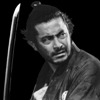
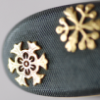
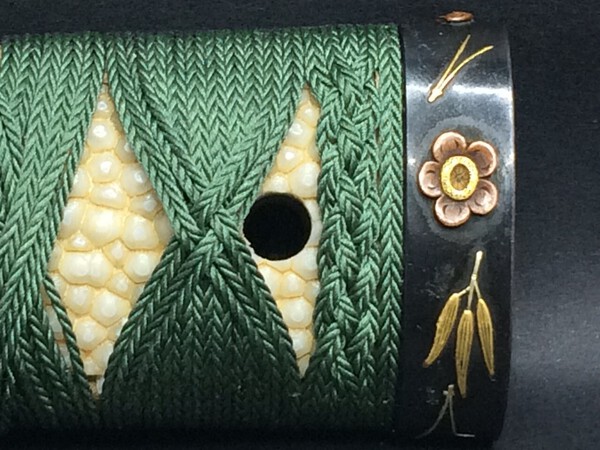

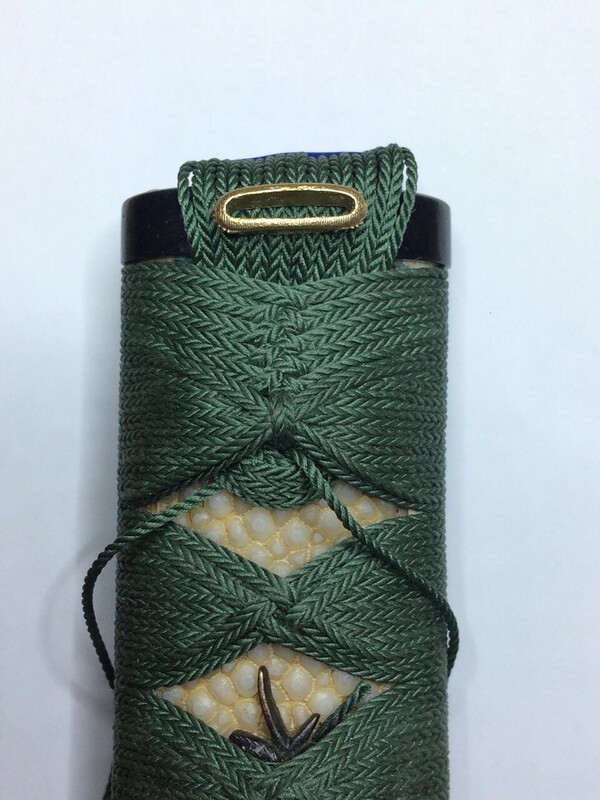








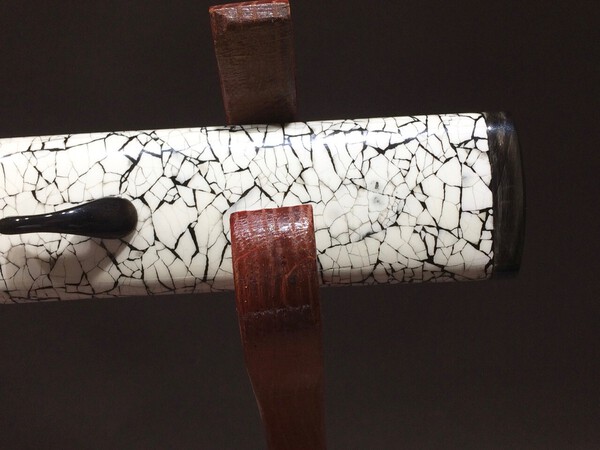







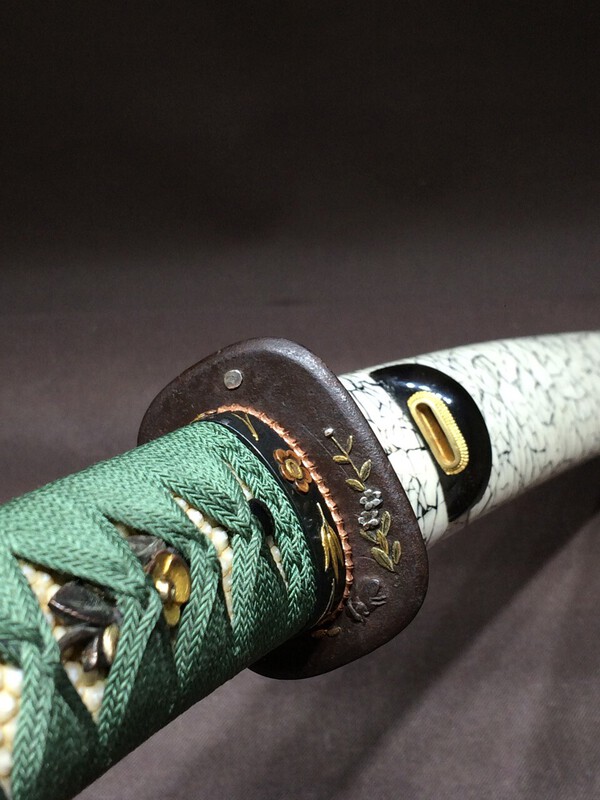






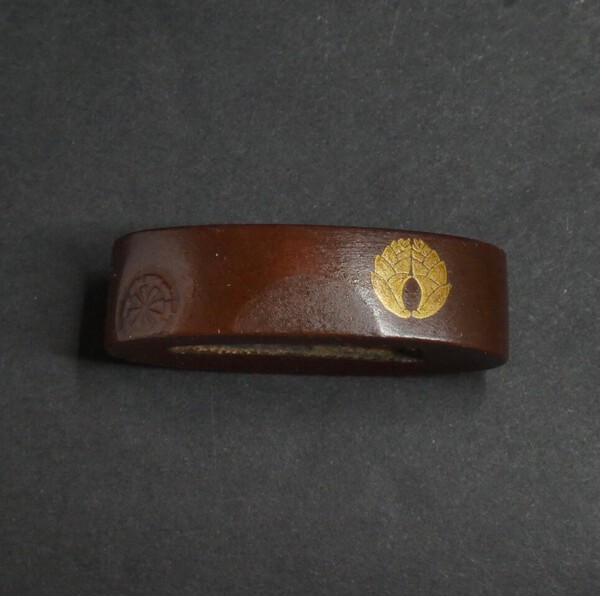
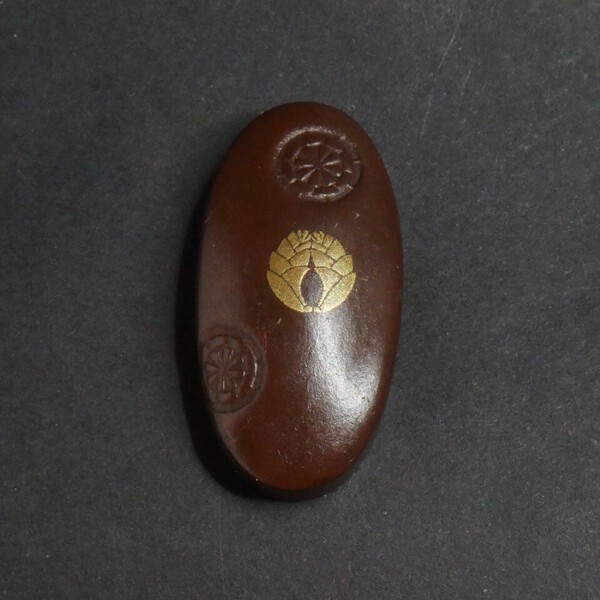
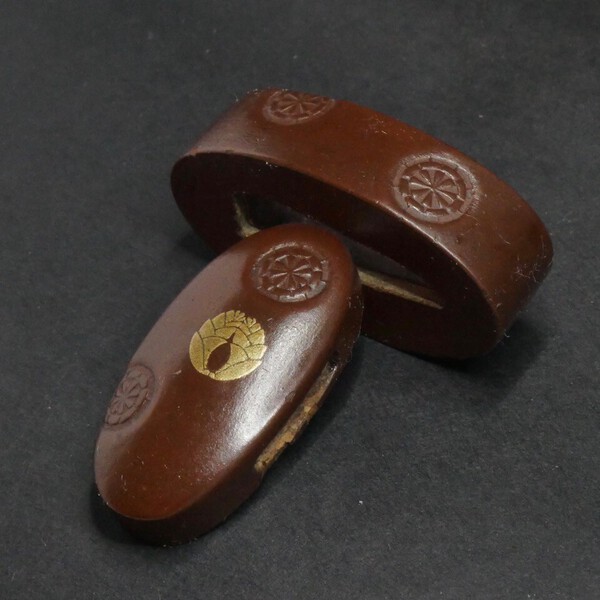







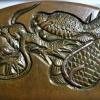

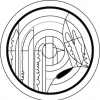
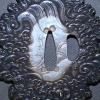












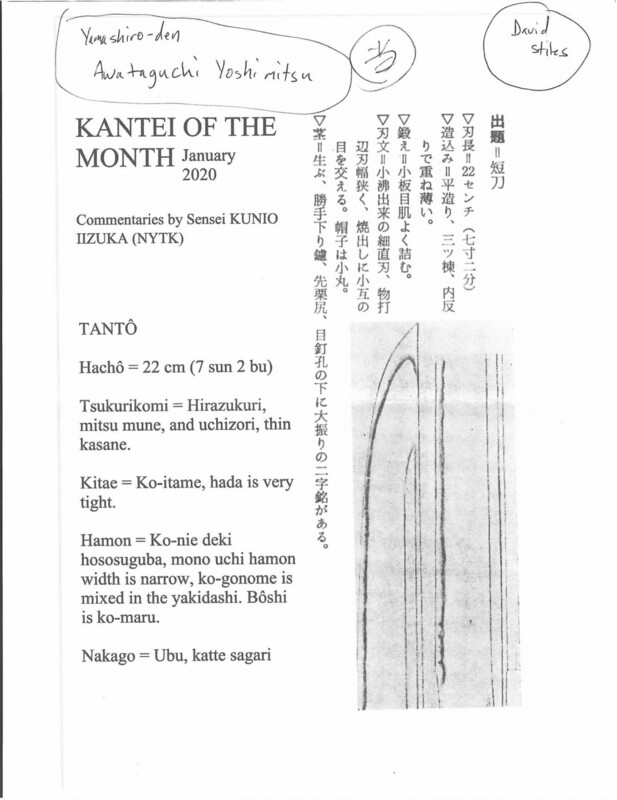

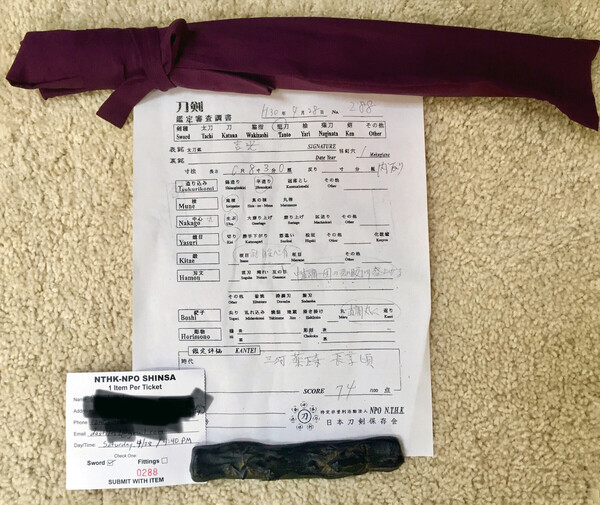
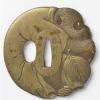


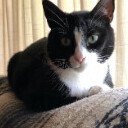

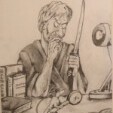
.thumb.jpg.87d3644abefa46eef3c452726af2bb0b.jpg)
.thumb.jpg.3f3618d549d3efb5949e8c16947b14d6.jpg)


